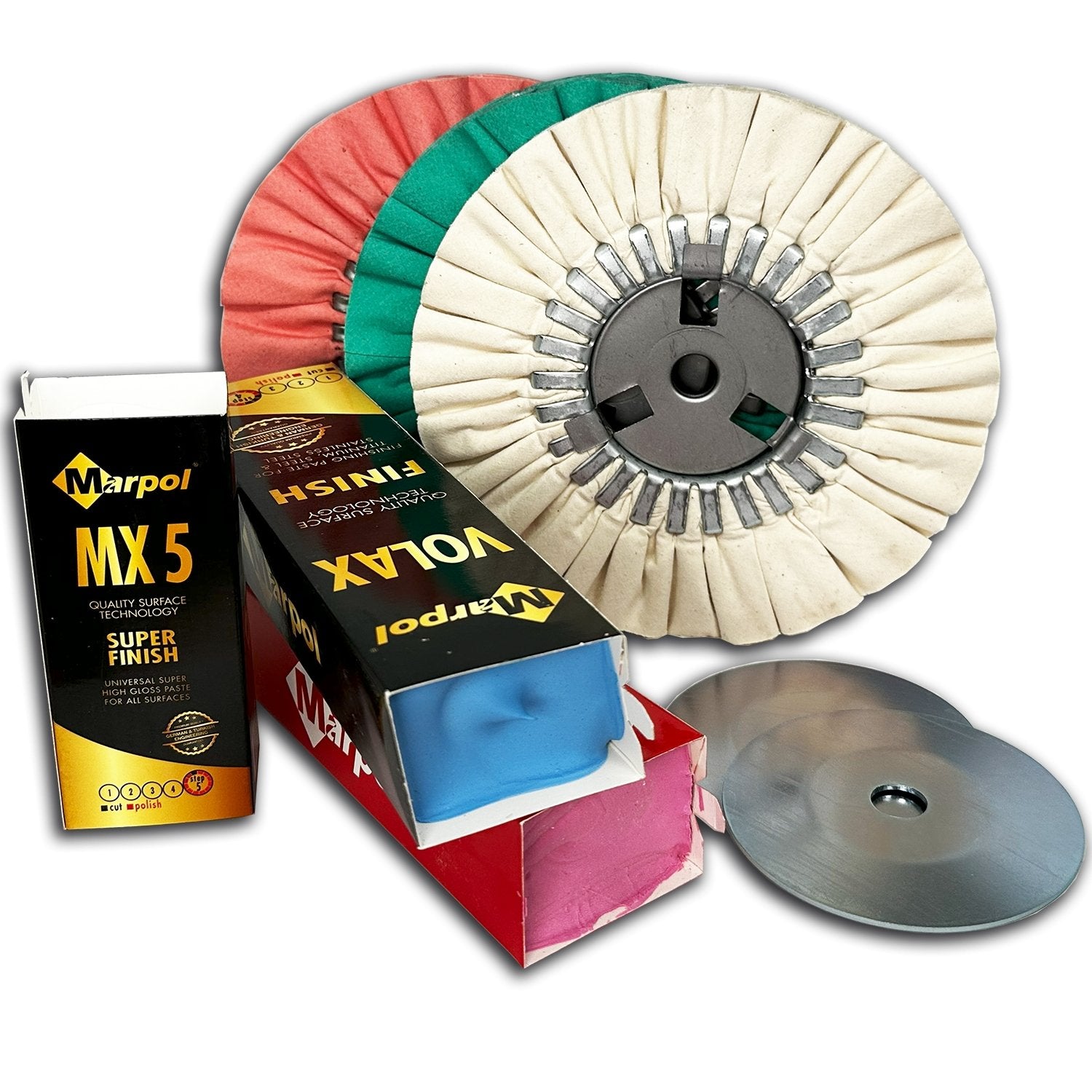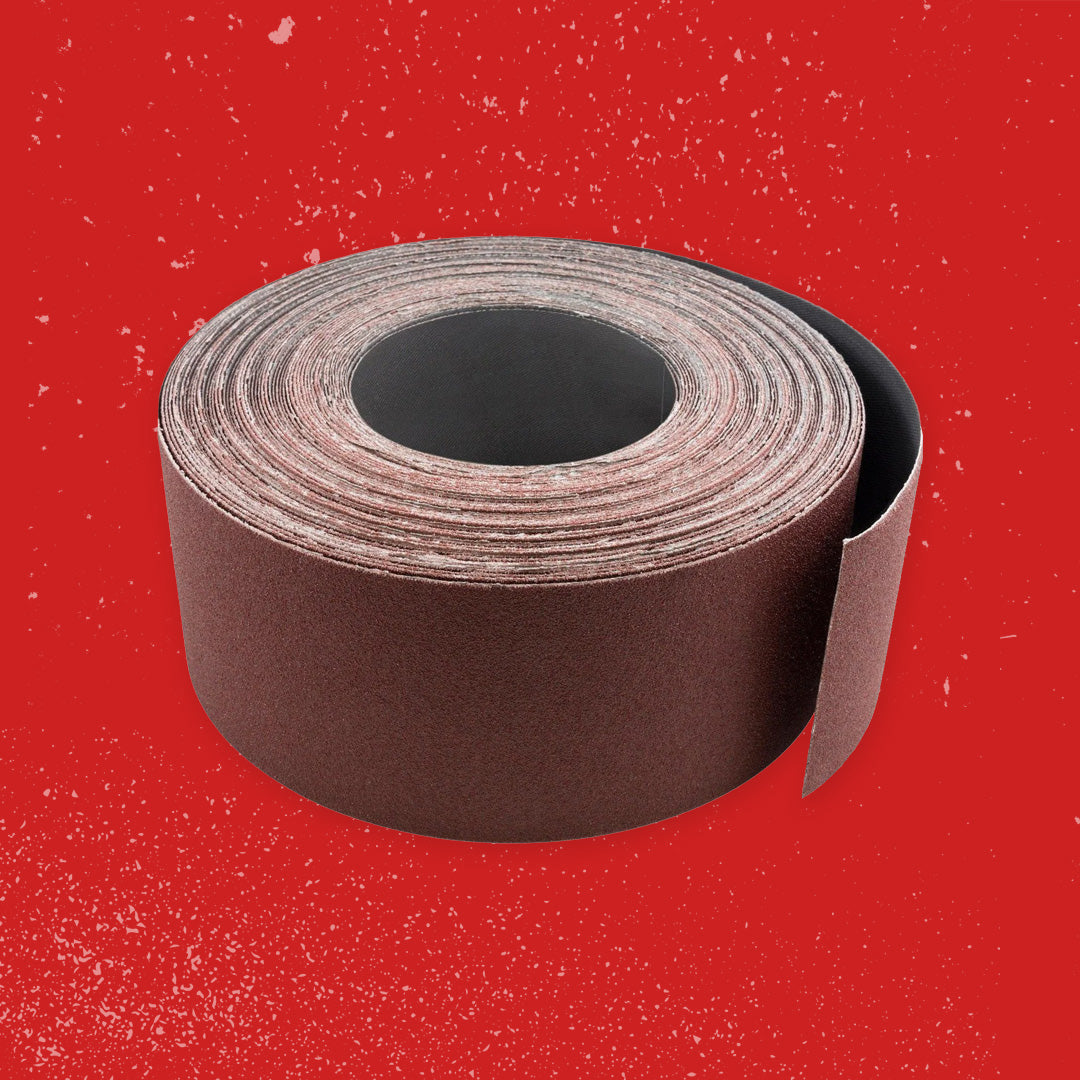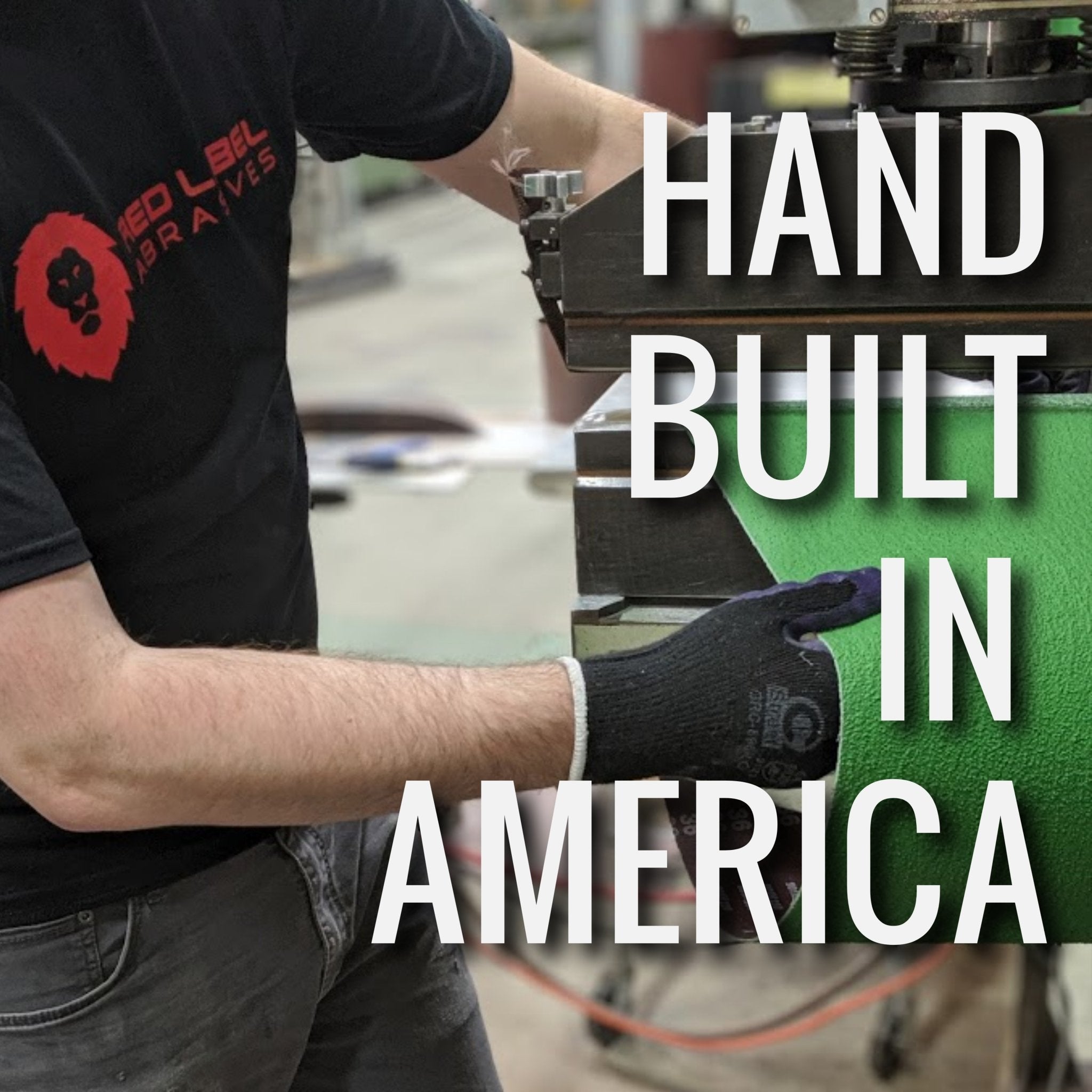Tu carrito está vacío
Envío gratis a partir de $150 (No incluye productos de gran tamaño)
Envío gratis a partir de $150 (No incluye productos de gran tamaño)
Bandas de lijado
Discos de lijado

A Guide to Polishing Compounds and Their Uses
por David Kranker 7 lectura mínima

Polishing compounds are a type of abrasive consisting of polishing powder mixed with fats and waxes to create a bar or cake. They are used in a variety of industries to smooth metal surfaces and gradually apply a professional-quality finish. To help manufacturers properly distinguish between polishing compounds, we’ve created a comprehensive guide that breaks down the different types of polishing compounds and their uses.
Polishing Compound Categories
Polishing compounds fall into three primary categories:
-
Tripolis, which are intended for cutting away metal, with higher cuts clearing away more material than lower cuts. Tripoli compounds remove scratches and emery marks to deliver a smooth, although dull, surface.
-
Intermediates, which smooth rough surfaces and provide a certain amount of luster.
-
Finishing rouges, which are burnishing compounds used to deliver a high-quality polish.
Because they have varying functions, polishing compounds come in many forms, with surfaces that range from highly coarse to super-fine. Depending on the application and how much smoothing needs to be done, you can use different compounds throughout the process to smooth away imperfections and achieve the desired results.
Commonly-Used Polishing Compounds and Recommended Applications
While some polishing compounds, like aluminum, blue, or yellow are designed for certain applications, others have a wider range of uses. We’ve put together a list of frequently used polishing compounds and their typical uses below.
Black Emery
Black emery compound is full of minerals that give it top-notch cutting ability. It is commonly used to remove deep scratches, so after you’ve cut your steel, it can remove the 320 and 400-grit marks left by your sandpaper. If you need to smooth rough surfaces, you should always start with this compound because it will save you hours of work.
You can also use black emery to remove small pits, paint, lacquer, and other coating or blemishes from metallic surfaces. When used in smaller doses, it adds shine to aluminum, steel, copper, brass, and similar metals.
Brown Tripoli
Being highly versatile, the brown tripoli polishing compound is commonly used to both buff and polish surfaces on softer metals like aluminum, brass, and copper. It can even be applied to stainless steel and wood surfaces, resulting in a lustrous finish.
Green
Green metal polishing compound is mainly used to finish stainless steel surfaces. It clears away scratches and provides a bright finish on both hard and soft metals. The green compound tends to work best on metals such as chrome, stainless steel, and platinum, which is the reason that it is often referred to as a stainless steel compound.
Yellow
Yellow polishing compounds deliver a brilliant shine on hard metals like gold and platinum, which is why this particular compound is popular in the jewelry industry. In industrial applications, these low-residue and dry compounds are often used to remove sanding marks, grease wheel marks, and belt lines from all kinds of metals.
Pink
Pink polishing compound is applied twice: in the first stage of soft metal polishing and in the final stage of hard metal polishing to add a finishing touch. It is one of the most versatile compounds, as it can also be used on wood, painted surfaces, and plastic.
White
Used primarily on stainless steel and hard metals, white polishing compounds have a composition that makes them suitable for the cutting and intermediate stages of the polishing process. They are especially effective when used on harder metals like nickel plating and chrome.
Blue
If you work with non-ferrous metals, synthetic materials, or plastics, the blue polishing compound can restore their original smoothness and gleam and leave a high-luster finish. For this reason, it is often used on platinum and other precious metals.
Purple
A low-temperature purple compound is recommended for applications at lower RPMs. If you need to polish or remove scratches from intricate surfaces like jewelry, purple does an excellent job of delivering surface smoothness and shine.
Aluminum
Aluminum metal polishing compounds provide a smooth and even surface on soft metals. For this reason, they are a recommended choice if you want to remove more obvious scratches and imperfections while restoring aluminum.
Gold
The gold metal polishing compound consists of different grades of abrasives. Together, they provide a high luster to polished metals, making them another popular choice for jewelers and metalworkers.
Red
Red rouge is commonly called jeweler's rouge because jewelers frequently use it for polishing gold, silver, and other precious metals. It can also be used on pieces with thin layers of plating. It applies shine and sparkle in a matter of minutes, making treated surfaces look brand new.
How to Prep Steel for Polishing
Metal shines naturally, but it oxidizes and gets scratched over time. Small valleys made by scratches and oxidation prevent light from reflecting back, compromising your shine. Polishing removes the oxidation and smoothes the metal out, removing imperfections and making it gleam once again.
Start with a coarse grit sandpaper: somewhere between 40 and 80 grit. After that, sand the metal to be polished. If there are any large scratches, make sure they are removed. After that, sand it again with a finer sandpaper, such as 100 or 160 grit, before progressing to a finer grit paper (around 200). Repeat this step with progressively finer grits until you have the results you’re looking for. The number of passes will depend on the condition of the metal and how much you are sanding.
During this step, it is important to apply consistent, light to moderate pressure: if you use too much, it will grind away too much material and create divots, while inconsistent pressure can ruin the polish and leave uneven surfaces. It is also important to find a balance between speed and efficiency. Make sure you don't rush, or you will miss things, but don't go too slowly, or you'll oversand.
Polishing vs. Buffing
Considering whether you should be buffing or polishing? These are both processes that give you a smooth, bright finish:
-
When you polish a surface, you use a coarse abrasive to smooth it out, like when you sand wood with finer sandpaper.
-
In buffing, looser and finer abrasives are used to smooth a surface further in order to achieve a higher luster or mirror finish. Cut buffing is the first step:iIt involves buffing scratches with a coarser compound, such as black emery or brown tripoli. Depending on the surface, additional color buffing may not be necessary at this point. The next and final step in achieving maximum shine is color buffing. White rouge is very popular, and the color compounds with the finest abrasive materials (green and blue) can give most metals, woods, stones, or plastics a mirror finish.
How to Use a Polishing Compound
There are a few things that you need to smooth or polish a workpiece surface:
-
The right polishing compound for the material and application (for example, polishing vs. scratch removal)
-
A cleaning cloth
-
Polishing / buffing wheels attached to buffing machine, drill, or similar power tool
Step 1: Identify the Material
Different colors represent different grits and can be used on a variety of surfaces. Various grades are available for different metals. Moreover, some compounds have a coarser texture, making them better for scratch removal, such as black for hard metals and brown tripoli for softer metals; other compounds are used for final polishing steps, such as white or green.
Step 2: Start With Coarser Compounds and Work Your Way Up
Start by removing scratches from your surface using your coarser compounds. You may want to use the brown tripoli polishing compound on soft metals like copper to remove scratches and imperfections. For the final cut, use a finer grit compound, such as green, white, or gold, to achieve a mirror-like finish.
Step 3: Apply The Compound to the Buffing Wheel
Using a power tool such as a drill or bench grinder, spin the buffing and polishing wheel and carefully apply the polishing compound to the wheel. Apply a light layer of compound on all ends of the wheel.
Step 4: Hold the Item against the Buffing Wheel
Apply the compound-covered wheel to the item and let it work through the surface. When you run out, repeat step 3 and keep reapplying the polishing compound. Spread it over the entire surface until the workpiece is completely covered.
Step 5: Wipe Up the Residue
Polishing will leave a residue compound on the surface. With a moist cloth, wipe the residue with warm water and soap. As soon as it is clean, you will see the results of your polishing efforts.
Which Polishing Compounds Are Best for Scratches?
For scratches, you need a polishing compound that works more aggressively. Generally speaking, there are two bars commonly used for this type of application: the black emery, which can remove marks as coarse as 400 grit, and brown tripoli, which is commonly used on aluminum and can remove sanding marks in the 400-600 grit range.
How Should You Use a Polishing Compound on Aluminum?
When you want to remove visible scratches and imperfections from aluminum, use the brown tripoli for the initial cutting and buffing, followed by a green compound to apply a smooth and even shine. If you’re looking for a mirror finish, complete the task with a blue or purple rouge for a show-worthy result.
About Red Label Industrial Abrasives
Red Label Abrasives manufactures and provides effective and high-quality abrasive products for a variety of applications. For over 40 years, our family-owned factory has offered professionally engineered abrasive products to some of the largest metal, glass, stone, plastic, textile, and woodworking manufacturers in the country.
If you’re looking to purchase abrasives, our abrasive experts can help you evaluate the type of abrasive that would be best suited for your application. For more information, please contact us by filling out a contact form or calling (844) 824-1956.
Ver artículo completo

Cómo darle un acabado brillante a los muebles
por David Kranker 3 lectura mínima
Ver artículo completo SOBRE EL AUTOR
David Kranker es un escritor y creador creativo que ha estado cubriendo las industrias de abrasivos y de fabricación de cuchillos en el Blog de Red Label Abrasives desde 2020. David dedica su tiempo a investigar continuamente sobre lijado y cuchillería para brindar a los lectores la mejor y más reciente información. En su tiempo libre, David utiliza abrasivos para muchos proyectos diferentes de hogar y automóvil en su casa de Delton, MI.
Our Most Popular Abrasives

EdgeCore Ceramic Sanding Belts

EdgeCore Ceramic Flap Discs

Buffing Kit
Shop By Product Category





Why Choose Red Label?






